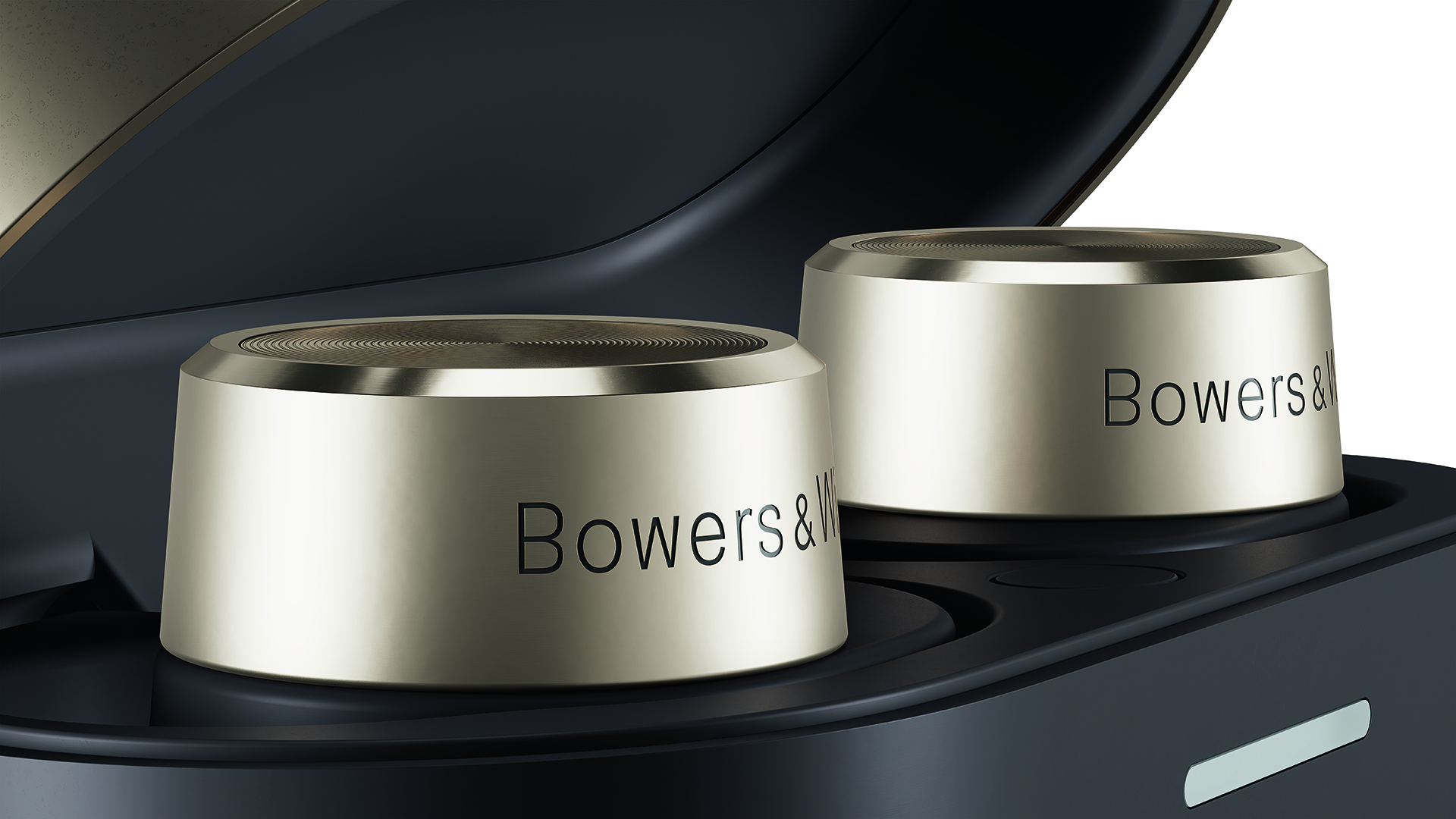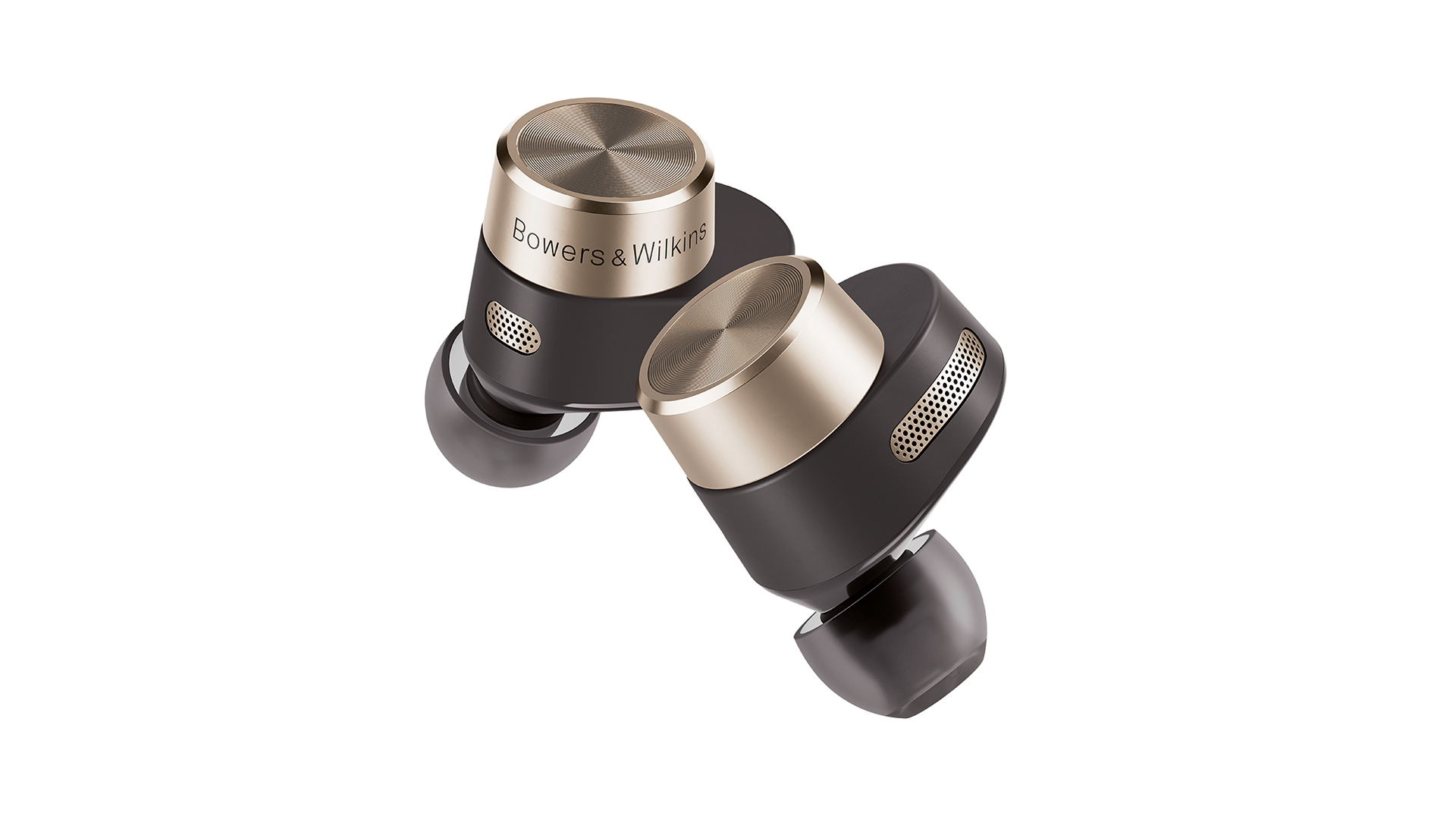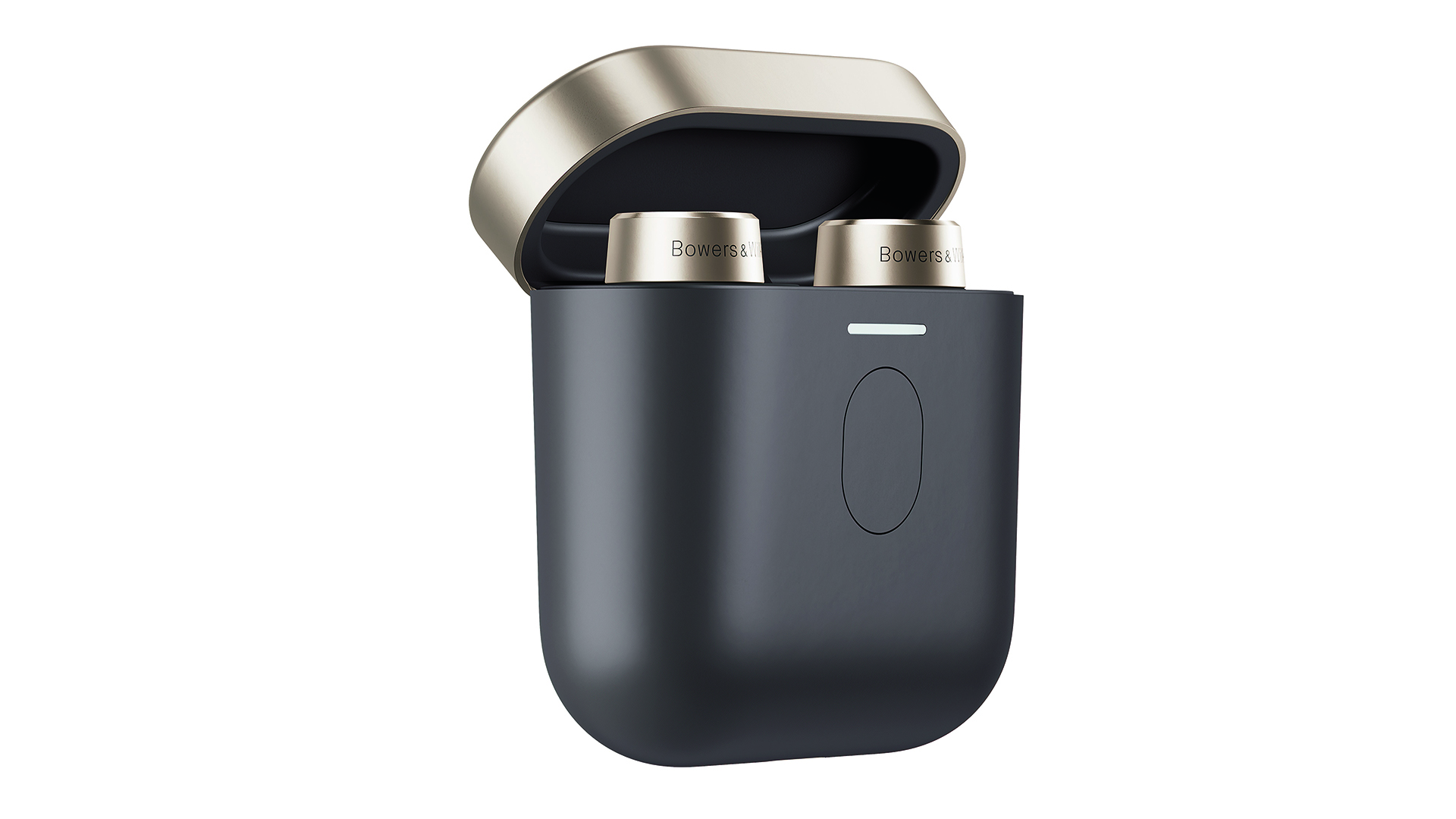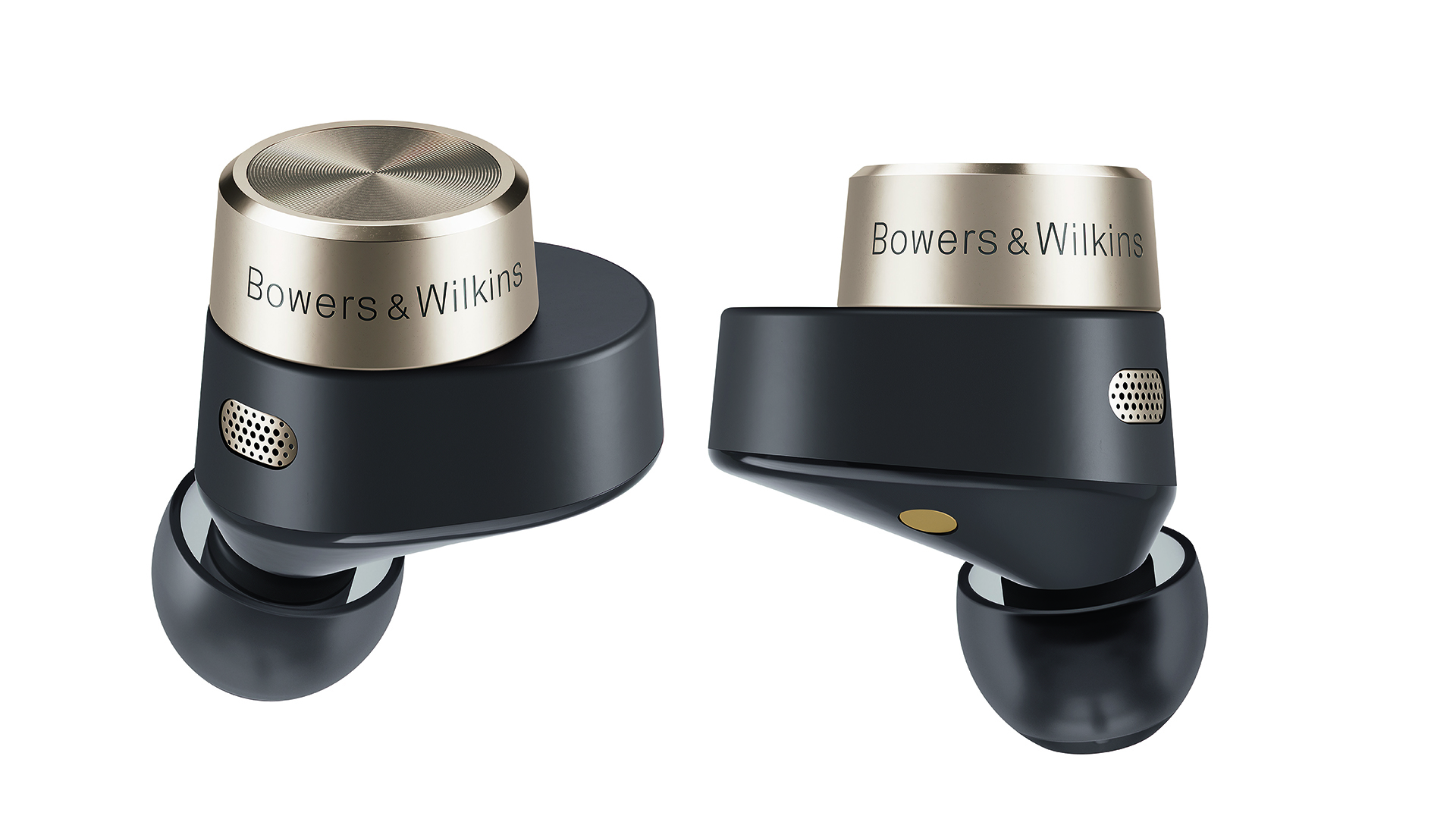What Hi-Fi? Verdict
Their sound is wonderfully detailed and clear, but on balance we expected more from Bowers & Wilkins’ first premium true wireless earbuds
Pros
- +
Clear, agile, insightful sound
- +
Classy finish
- +
Retransmitter case feature
Cons
- -
Expensive compared to main rivals
- -
Occasional sound drop-outs
- -
Noise-cancelling is basic
Why you can trust What Hi-Fi?
Bowers & Wilkins’ first pair of true wireless earbuds has been a long time in the making, so we’re looking forward to hearing exactly what the B&W PI7 can do. They're the firm’s flagship offering in a two-model debut range and are ambitiously priced, well above the level of obvious rivals from the likes of Sony, Sennheiser and Bose. The pressure is on Bowers to justify the hefty £350 ($399, AU$599) price tag.
At this sort of price for a pair of true wireless earbuds, we’d expect sonic prowess, effective noise-cancelling, high levels of comfort and battery life, a fully fledged app, portability and possibly even a few extras thrown in for good measure. So, has the British brand succeeded at the first time of asking?
Build and comfort


Finishes x2
Battery life 20 hours (4 hours, plus four charges from the case)
Bluetooth version 5.0 with aptX HD
Noise-cancelling Yes
Weight 8g (each)
Considering the size of the buds, B&W has done well to make the PI7’s charging case small enough to fit in your pocket. With the slender case shut, you might imagine it contains an AirPods-type ‘toothbrush head’ design, but the elliptical buds are nicely nestled inside.
The buds themselves are on the larger side, similar in shape to the Sennheiser Momentum True Wireless 2 but more capsule-shaped rather than teardrop – and not quite so ergonomic or comfortable. Beautifully finished with brushed gold accents on the mics and on the circular capacitive control pad above the driver housing, they look more premium than the Sennheisers.
Those with smaller ears may struggle to achieve a good fit, an issue that is compounded by the fact that you only get three ear tip options in total to achieve a decent seal. Using the ‘twist and lock’ technique inherent in such designs, we manage to get a secure fit. However, over a longer listening session, the 8g buds feel less comfortable than we’re used to owing to their straight-edged shape.
Under the hood, each earpiece features a dual-driver arrangement: a balanced armature for the high-frequencies, with mids and lows handled by a 9.2mm dynamic driver. Each has its own individual amplifier.
Bluetooth 5.0 with aptX Adaptive means aptX HD and aptX Low Latency are all onboard from your source player, and the transmission between the buds themselves supports a 24-bit/48kHz resolution. Pairing is a breeze, but unfortunately in our testing, we experience occasional drop-outs, where playback cuts out for a split second, then resumes. We try a second review sample and unfortunately struggle with the same issue again.
The PI7 have a total of three mics per earpiece to take care of call handling, chatting to your voice assistant (currently either Siri or Google Assistant), and analysing ambient conditions for the adaptive active noise-cancellation tech.
The battery life with the PI7 earbuds fully juiced up is an underwhelming four hours. The case holds a further four charges, meaning it’ll be 20 hours before you need a power source or Qi wireless charging mat. That's acceptable, but hardly class-leading – and the PI7 are certainly billed and priced as such. On the plus side, ten minutes of quick-charge via the case's USB-C socket gives you two hours of playtime.
The buds are rated IP54, which means they are splash-proof. The case itself, however, shouldn’t go anywhere near a drink.
Features

The touch-capacitive controls on each earpiece work well with rapid response times. The most obvious functions, including play/pause, skipping tracks, accessing your device’s voice assistant and switching between noise-cancelling modes, can be done here. The ‘auto’ option means that the PI7’s mics will assess your surroundings and adjust the level of noise-cancellation accordingly.
To unlock more features, you will need to download the Bowers & Wilkins Headphones app. It is not the most useful app we’ve seen, but here you can switch the wear sensor on or off. By default, the earbuds will pause playback when you take them out of your ears.
The app is also the only way to access the slider for ambient pass-through, which allows a degree of external sounds in, such as voices or station announcements. It also includes a selection of six different, but rather unnecessary, ‘soundscapes’.
But there are two significant feature omissions. First, you can’t adjust the volume using the PI7’s on-ear controls. The only way to control playback volume is to ask your voice assistant to handle it, or to dig out your source device. Secondly, you can’t tweak the PI7’s tonality.
While we could overlook these omissions on a budget pair of in-ears, they're a big hole in the spec sheet at this premium level. Bowers & Wilkins says these features could be added as expansions in the future, based on customer feedback, so we’ll be first in line to say that volume control would be especially useful.
Although the ambient pass-through slider is effective for being able to hear conversations while wearing the earphones, the noise-cancelling function is rather basic. It fails to successfully eliminate a great deal of extraneous low-level constant noise such as the AC unit in our office, or the tumble-dryer when we’re listening at home. In direct comparison, it is beaten for efficacy by the Sennheiser Momentum True Wireless 2.
However, Bowers & Wilkins at least partially atones for these absences with one unique addition to its feature set: the PI7’s case can act as a ‘retransmitter’. In the box, there is a USB-C to USB-C cable and a 3.5mm to USB-C one. Connect the USB-C end of either cable to the PI7’s charging case and the other end to a music source, such as your laptop, and the case streams the audio playing to the in-ears, at aptX Low Latency standard.
It’s an impressive USP and brings simple wireless connectivity to in-flight entertainment systems, games consoles and more. The earbuds also boast Bluetooth repeater functionality, so they can share sound with a second Bluetooth device. Both features make the PI7 an interesting proposition, but whereas the latter is useful, the former is an industry first.
Sound

We cue up Waitin’ Guilty by The Black Crowes, a Tidal Master file, and there’s considerable separation between each guitar as one ‘talks’ to the other in the intro, before a central, precise and three-dimensional Wurlitzer joins. There’s an extra dollop of detail through the keys in our left ear as Christopher Mark Robinson’s vocal arrives slap-bang in the middle of this cohesive mix.
We select one of B&W’s suggested tracks, Billie Eilish’s Everything I Wanted on Qobuz, and Eilish’s vocal is as nuanced and breathy as the artist intended within the PI7’s neutral presentation. The PI7 betters the competition when it comes to the layering of instruments and extra vocals, which join the mix with a modicum of extra space around them to shine. However, the intense rise and fall of this unique beat treatment is marginally more zealous and emotive through the Sennheisers.
B&W has served up a decisively transparent and detailed listen in the PI7, and one that will appeal to many listeners. It’s just that in aiming squarely at precision and clarity, the sound occasionally lacks an extra injection of dynamic excitement. The Sennheisers’ presentation is slightly richer and more full-bodied, making rhythmic musical passages and vocals through the low mids more impactful, without negatively affecting detail.
Any dynamic shortfall is not huge – the sound alone is easily five-star in both products, albeit for different reasons. That said, in direct comparison, we’d opt to reach for our Award-winners, because listening to good quality music should be an emotionally engaging experience, and that’s something we don’t quite get with the B&W PI7 to the same extent.
Verdict
The sound clarity offered by the B&W PI7 is class-leading in terms of detail and neutrality, and the novelty of a case that transmits audio to the headphones is a definite plus.
As an overall proposition though, we expect more from a set of true wireless earbuds priced at the high end of the market. The battery life is easily beaten by lesser-priced rivals, as is the comfort, fit, on-ear and in-app feature set – and we also experience some unwelcome drop-outs during our time with them.
This handsome set of wireless in-ears costs a fair bit more than many of its closest rivals and, despite an impressive sound presentation, we cannot currently justify that extra spend.
SCORES
- Sound 5
- Comfort 3
- Build 3
MORE:
Read our guide to the best in-ear headphones and best true wireless earbuds
What Hi-Fi?, founded in 1976, is the world's leading independent guide to buying and owning hi-fi and home entertainment products. Our comprehensive tests help you buy the very best for your money, with our advice sections giving you step-by-step information on how to get even more from your music and movies. Everything is tested by our dedicated team of in-house reviewers in our custom-built test rooms in London, Reading and Bath. Our coveted five-star rating and Awards are recognised all over the world as the ultimate seal of approval, so you can buy with absolute confidence.
-
MickMcCarthysTache Great sounding headphones but I'm also suffering with sound dropping out. It starts to get annoying. Maybe a firmware update might sort this problem out?Reply -
Al ears Must be Safari because of I click on the link in the first post it goes straight to the WHF reviewReply -
leroy Reply
Agree. Sound is great. The drop outs were unexpected especially when sitting motionless 3 feet from the source. The struggle is real.MickMcCarthysTache said:Great sounding headphones but I'm also suffering with sound dropping out. It starts to get annoying. Maybe a firmware update might sort this problem out? -
MoreMusic Recognized.Reply
Recent wearable products of B&W still sound fantastic though are not robust w.r.t. connectivity. Share bad experience. To my opinion B&W is hurting their brand name big time;
I replaced by other brand costing only 1/4-th of B&W but does not drop out. Neither in-house, nor out-house; -
MickMcCarthysTache Reply
I have to hold my iPhone to get a decent connection and even then it can drop out. If I pop my device in my pocket you can forget any music! I had a pair of wireless AKG Y50s and this never happened. Seems to miss the point of wireless if you have to hold your device near the earphones! I hope they solve this bloody problemleroy said:Agree. Sound is great. The drop outs were unexpected especially when sitting motionless 3 feet from the source. The struggle is real. -
Realitybytes I think these ear buds are great. Disconnection happens occasionally when first connecting to phone but after that a stable connection. Alot better than others I have tried. Sound is fantastic and sound stage very cool. Harsh review by What HIFI but to be expected at this price.Reply -
mwhhammond Agree with the comments here. I have serious dropouts which is not acceptable from a premium set of wireless headphones. Just had a reply from the Bowers and Wilkins support which just quoted the standard pages on how to improve Bluetooth performance. I hope they can get a firmware update to fix the problem otherwise they will be going backReply -
Vladislav Hi guys! I’ve PI7 and I faced with a strange bug. If you turn off “wear sensor” and then pull out right earbud your left earbud stop playing music. I’ve checked it on two pcs of PI7.Reply

